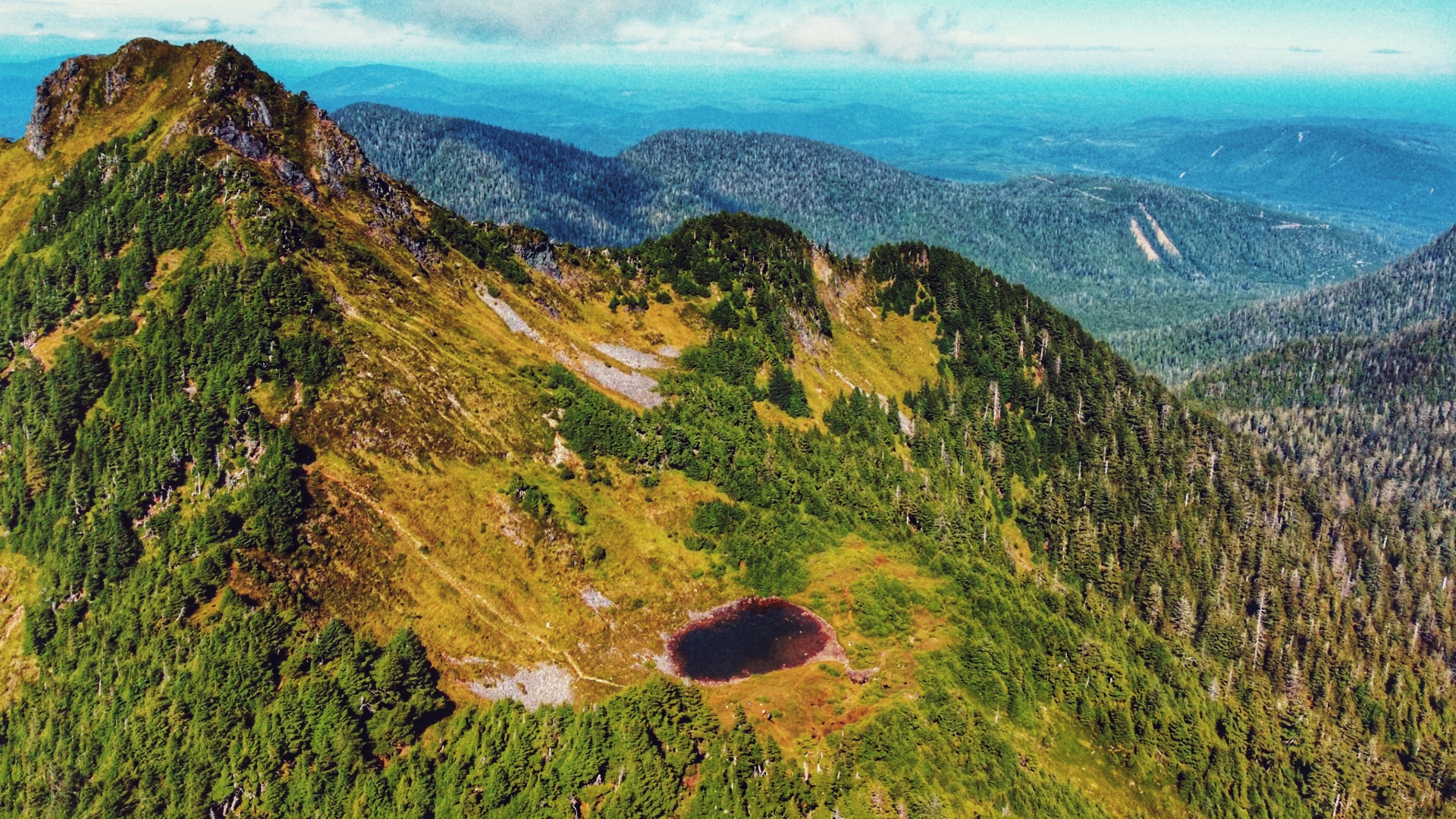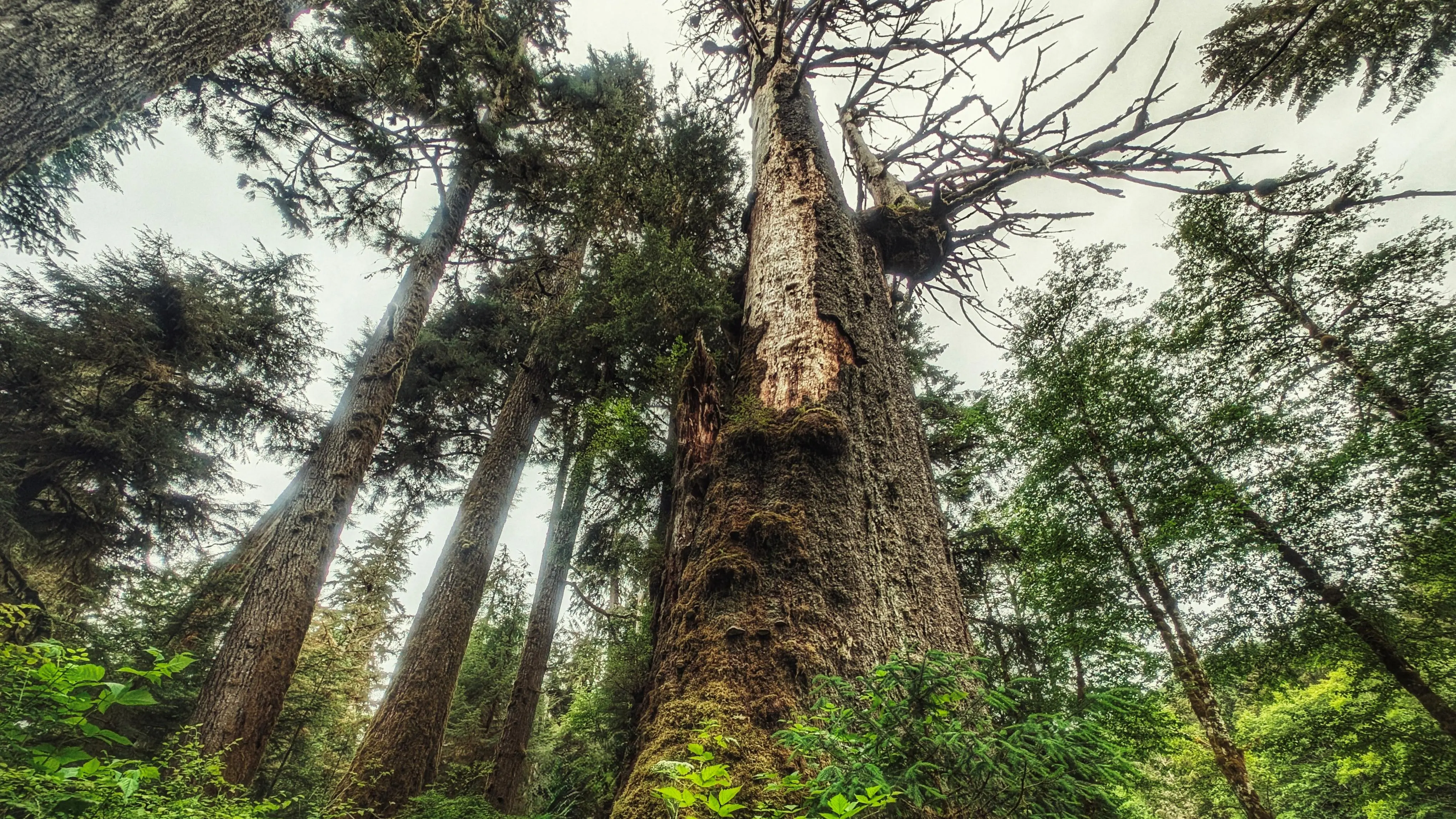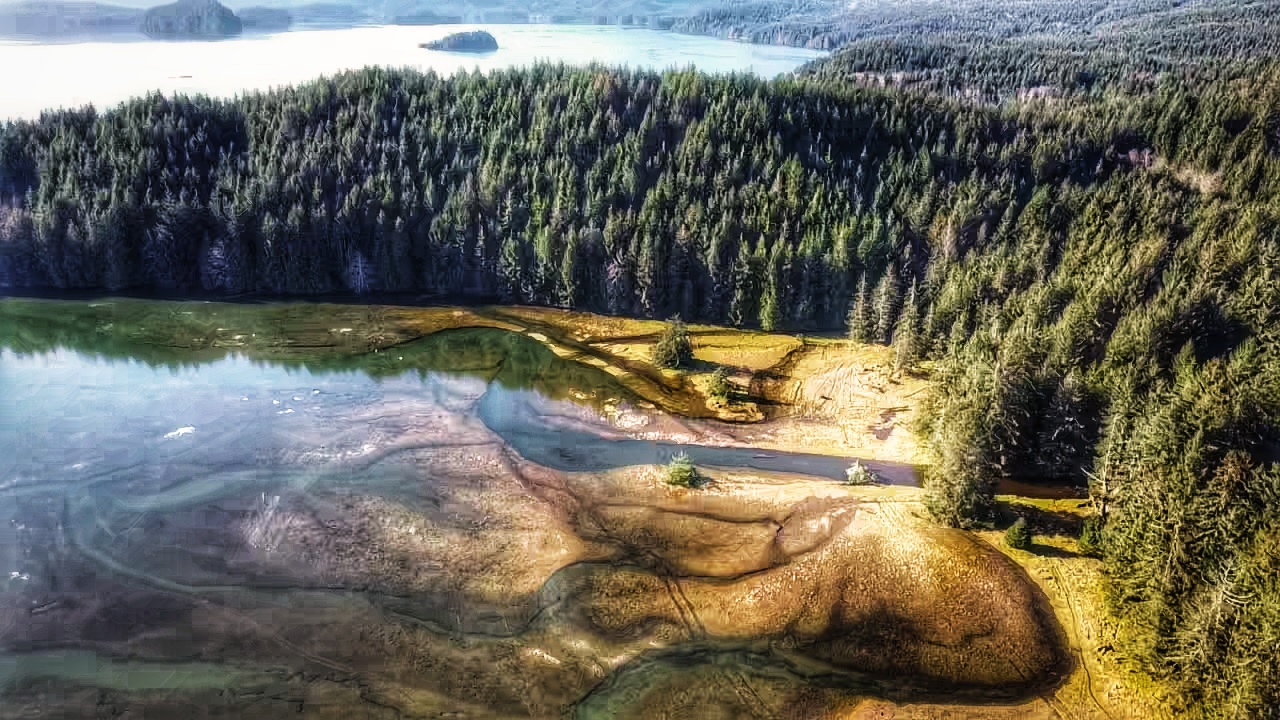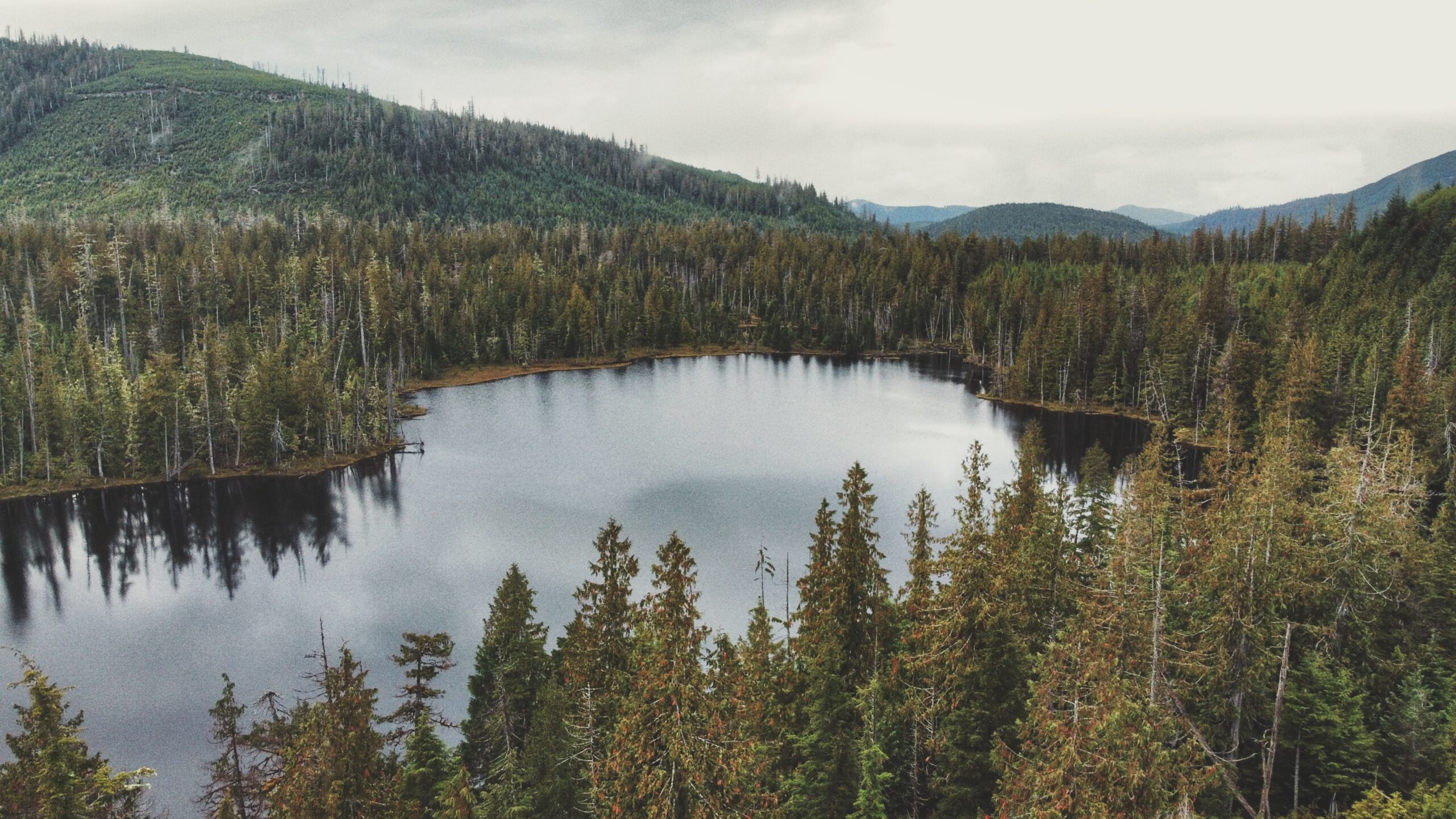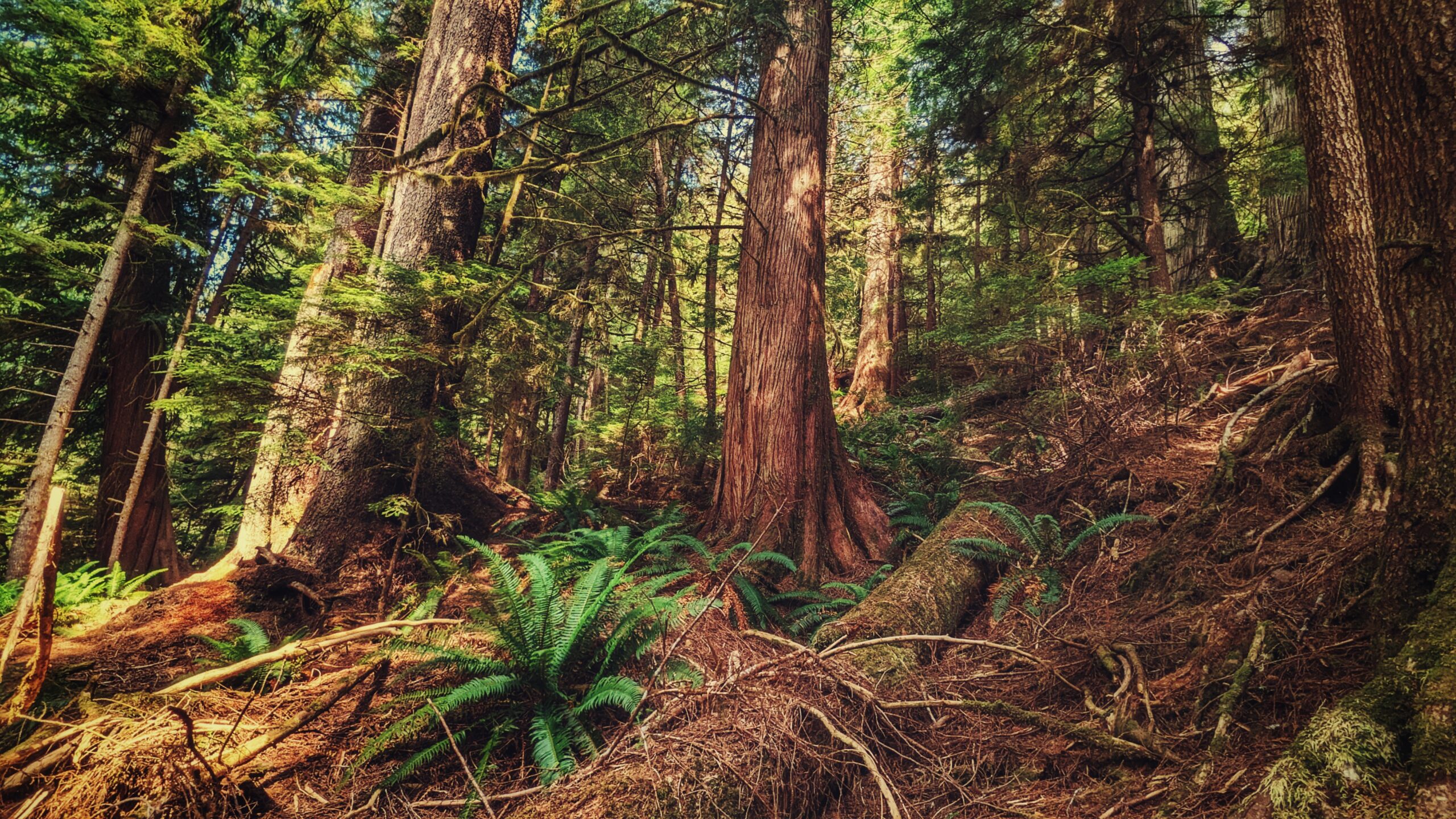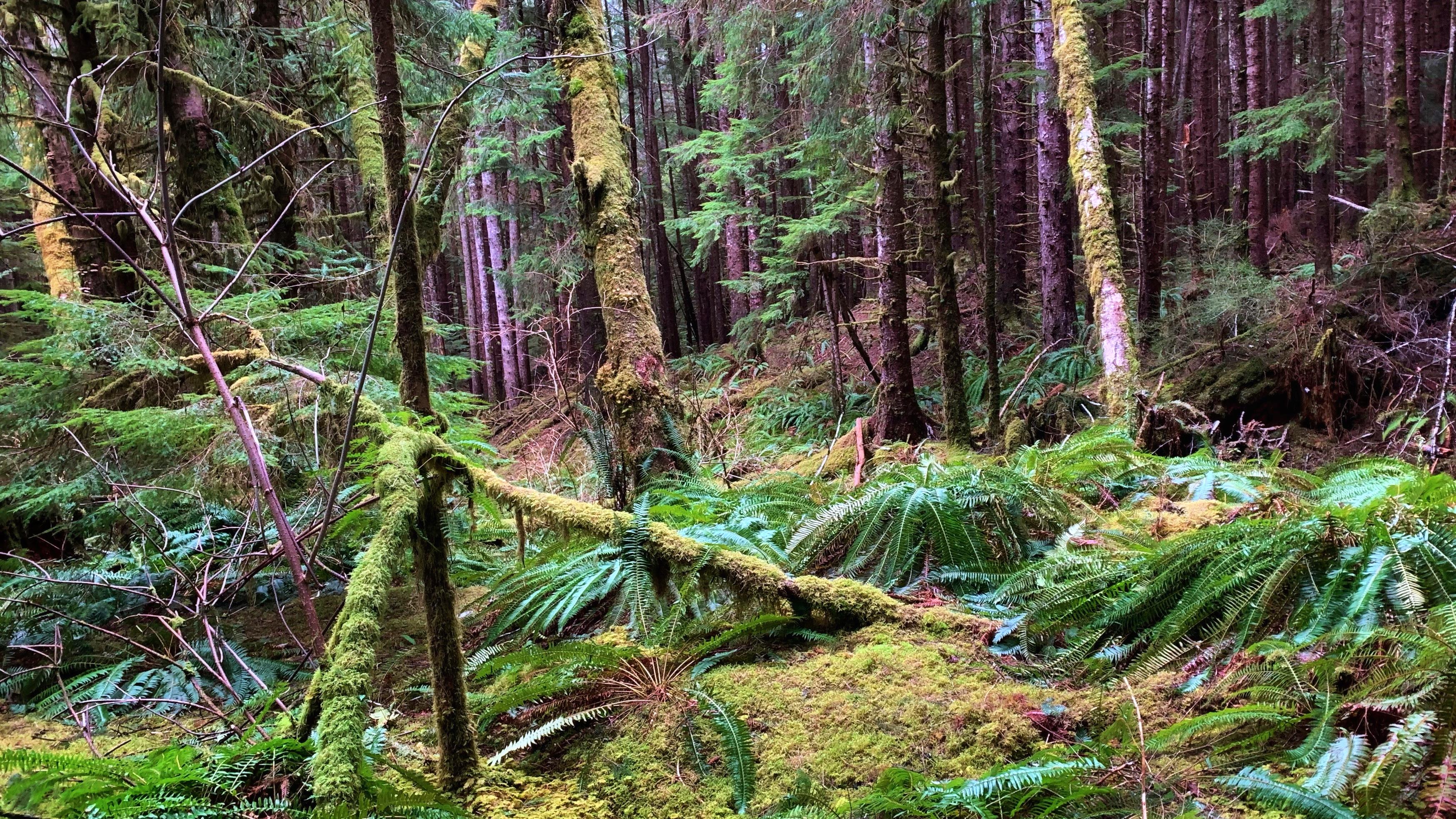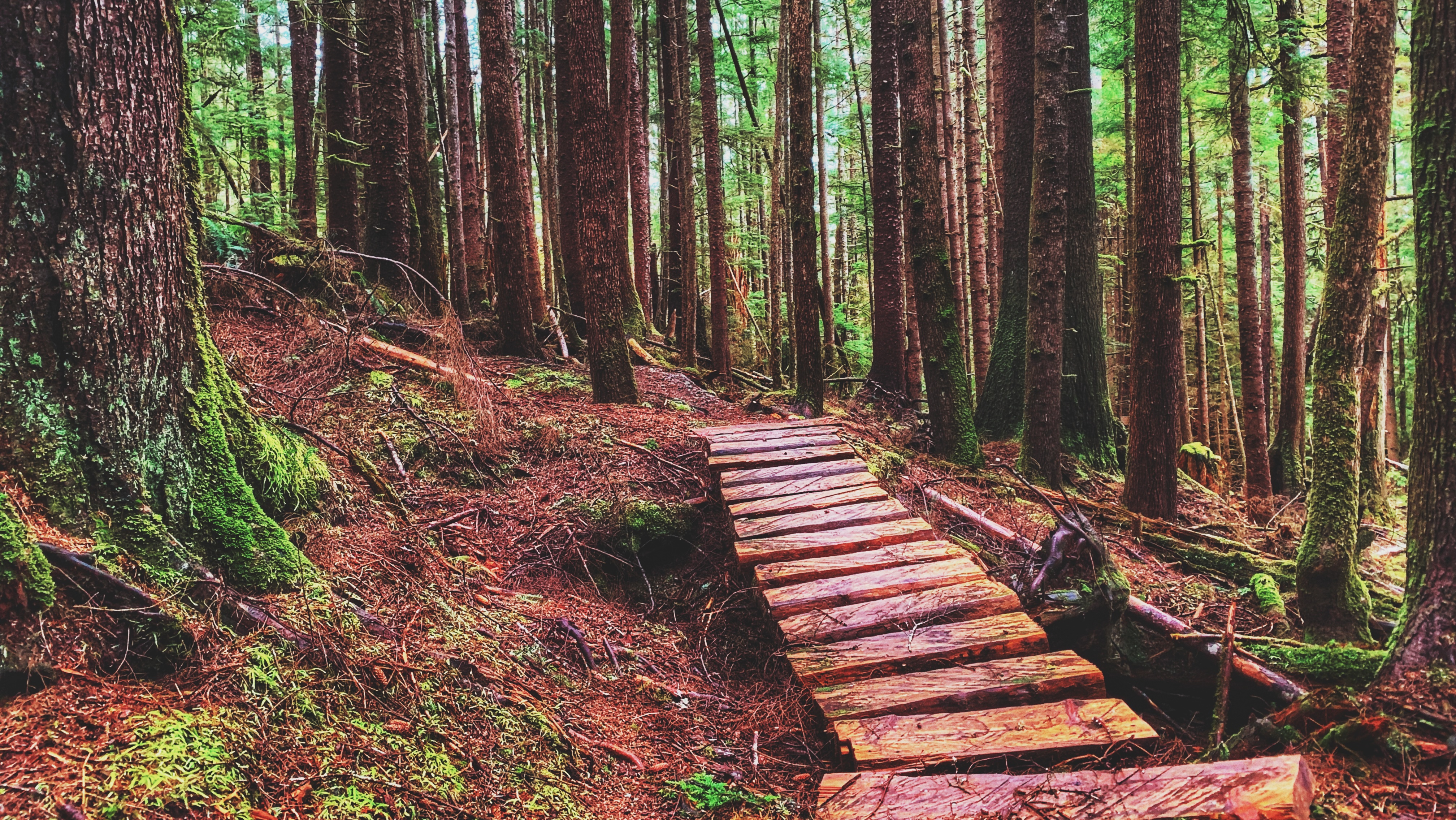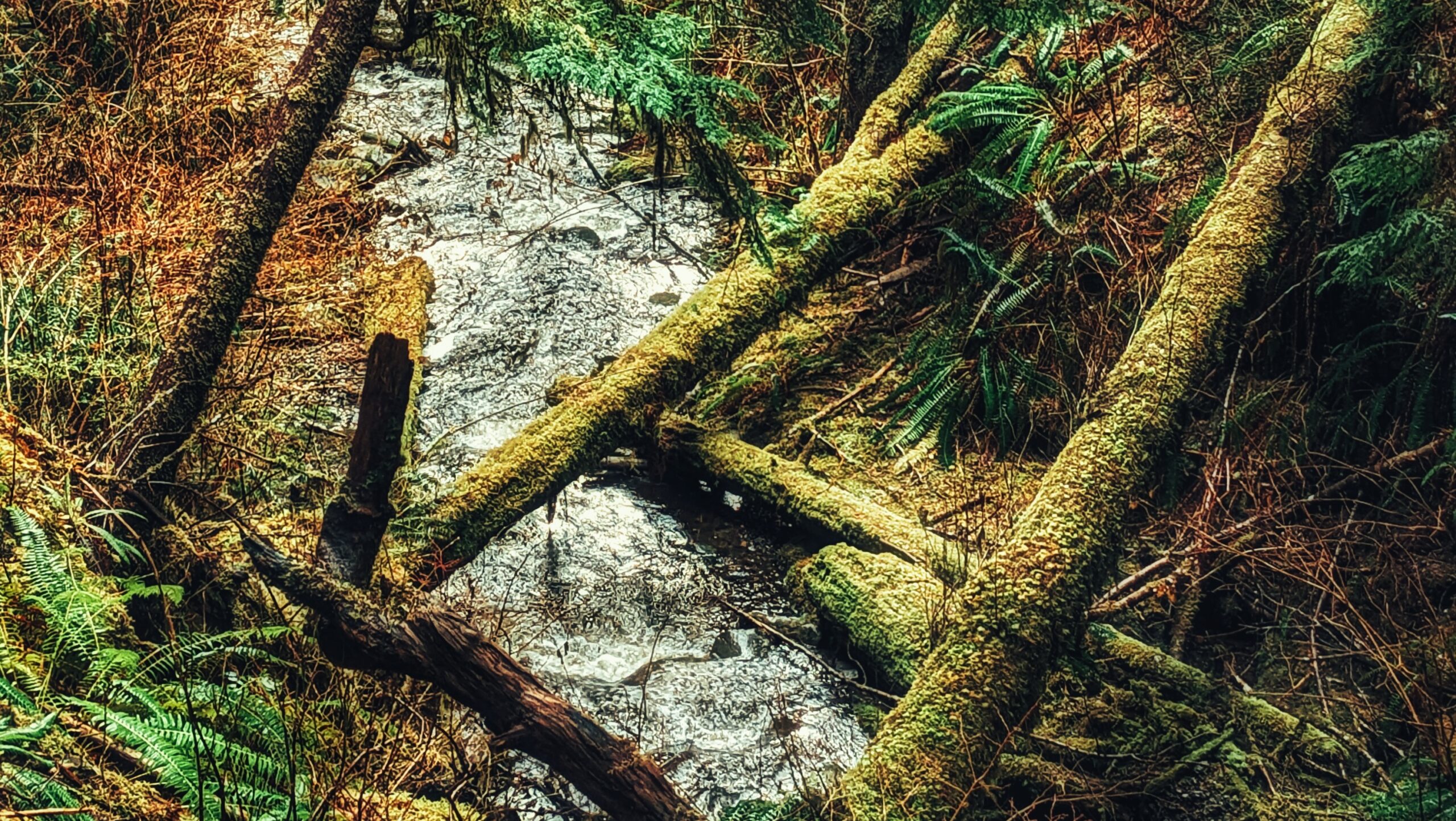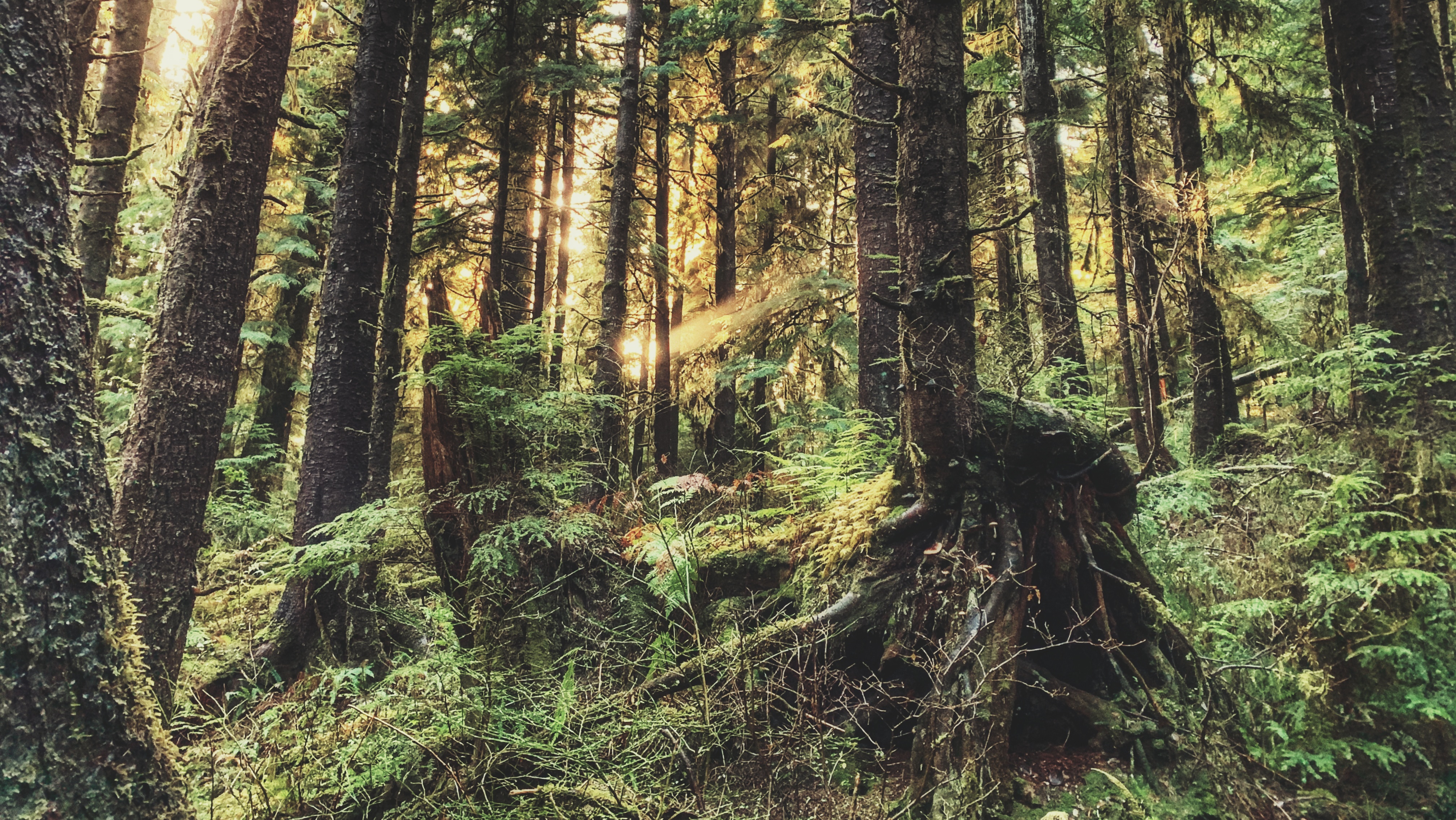In brief, there is no trail on Haida Gwaii called “Sleeping Beauty.” The name “Sleeping Beauty” actually refers to Mount Slatechuck and Mount Raymond – known collectively as the “Sleeping Beauty Trails” because, when viewed from the Village of Daajing Giids, the mountains resemble a woman’s face when laying in repose. What trail, then, are people referring to when they say they’re going to hike Sleeping Beauty?
Tag: daajing giids trails
As noted, this is not a formal trail of the Yakoun Old Growth Sitka Spruce Grove; however, you should see a vague path once you cross the river. It will lead you to an old de-activated road. The grove of old growth Spruce is facing the river. Take your time and explore these monumental trees. You will feel dwarfed in their presence, but this is forest therapy in the best sense of that term! Use caution as it is often difficult to see where you are stepping.
Be prepared for six rope sections. Most of these are short, and designed to help you over minor obstacles, but the final two – just before you reach the zenith – are essential in helping you reach the viewpoint safely. Once at the top, follow the narrow trail to a couple of viewpoints of the Tarundl Flats and bays down below. Please use caution while you are here as there are no ropes in place as a safety measure.
The trail to Small Lake is unmarked, but obvious, and takes about 10 minutes to complete. It is single- track and muddy, so one should use caution. The environment is one of young Sitka Spruce, some moss, huckleberry bushes, and other flora typical of a bog environment.
As was noted above, the Dempsey Collinson Memorial Trail is located a few feet behind the western Crabapple Creek trail marker, near the old M&B site. Just a few feet in, you will spy the rusted remains of an old “diesel donkey” hidden behind some bushes to your RIGHT. After a couple of minutes, you’ll come upon the first of many minor rope sections of the hike – this one bringing you down to Crabapple Creek. Cross the creek and continue hiking north.
Charlie Hartie Trail, named after a nearby creek which itself was named after early residents of what was then Queen Charlotte City, located at the top of 6TH street, just off 1ST Avenue (turn right).
On its surface, the Daajing Giids Seawalk is an inspiring urban hike or stroll along the village’s bustling waterfront. At a deeper level, though, this one-kilometre walk takes you deep into the historic heart of Daajing Giids, highlighting key milestones that helped in its own coming-of-age story
While Crab Trap was designed to function as a mountain biking trail, it is also a wonderful hiking trail. Clocking in at a brisk 1.2 kilometres one-way, the route takes you through a beautiful forest of spruce, hemlock and lush ferns.
Crabapple Creek Trail is another of the Daajing Giids’ “community trails.” It is approximately 1 kilometre in length (one-way) and is, in our view, one of the easiest of the local trails, only behind the Tarundl loops at Kagan Bay. Unlike a lot of trails on Haida Gwaii, Crabapple Creek is clearly denoted with formal trailhead markers and is, therefore, easy to find.
The Gore Brook Trail is one of 5 “community trails” in the Village of Daajing Giids. Unlike most trails on Haida Gwaii, Gore Brook actually has formal trailhead signage and is, therefore, easy to find. It has two main entry points: The first is at the top of 8th Street (north of the high school). Once you reach the top of 8th, turn right and you should see the trailhead marker adjacent to a small side road. The second point of entry is on the 2nd avenue (above the municipal office), along the Village’s western end.

